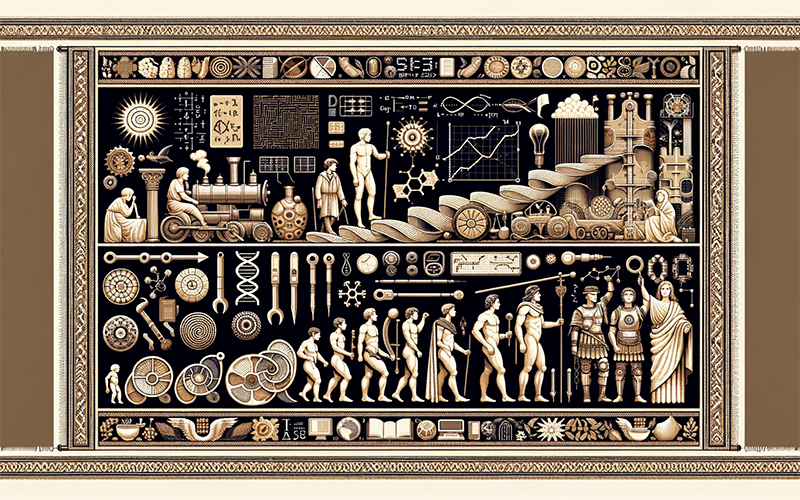The trajectory of human progress is richly woven with the threads of Science, Technology, Engineering, and Mathematics (STEM).
Each strand has its unique hue, its particular strength, and when interlaced, they form the robust fabric of modern society. This article traces the technical evolution of STEM, unveiling how historical milestones have shaped the sophisticated fields we know today.
The seed of scientific thought
The journey of STEM can be traced back to the Ancient Greeks, whose philosophers laid the groundwork for scientific inquiry. However, it was during the Islamic Golden Age, specifically from the 8th to the 14th centuries, that substantial advancements were made. Scholars like Al-Khwarizmi introduced algorithms, leading to the development of algebra—a fundamental branch of mathematics. His work not only shaped mathematical theory but also provided the basic framework for the development of computer science.
Renaissance: the blueprint of modern engineering
The Renaissance period brought about a symbiosis of art and science, leading to unprecedented innovation in engineering. Leonardo da Vinci, often heralded as the archetype of the Renaissance man, designed machines that were ahead of his time. His sketches of flying machines and detailed studies of the flow of water exhibit an early understanding of aerodynamics and fluid mechanics, which would centuries later prove invaluable to the fields of aeronautical and civil engineering.
The industrial revolution: engineering takes centre stage
The 18th and 19th centuries bore witness to the Industrial Revolution, changing the landscape of engineering forever. The invention of the steam engine by James Watt and the refinement of steel production methods by Henry Bessemer propelled mechanical engineering into a new era. This period marked a shift towards mass production and mechanisation, setting the stage for modern manufacturing and mechanical systems.
The electrical revolution: powering new possibilities
The late 19th and early 20th centuries were electrified by pioneers like Nikola Tesla and Thomas Edison, whose work in electricity transformed society. The harnessing and distribution of electrical power were perhaps the era’s greatest feats, leading to the establishment of electrical engineering as a discipline. The subsequent invention of the transistor in 1947 by William Shockley, John Bardeen, and Walter Brattain was nothing short of a revolution, paving the way for the development of integrated circuits and the computer age.
The digital age: computing and the onset of the information era
The latter half of the 20th century heralded the Digital Age, a ripe time for the STEM field. The creation of the first programmable computer by Konrad Zuse in 1941 marked the beginning of computer science as we know it. The Internet, a brainchild of computer scientists and engineers, emerged in the late 20th century and has since become the backbone of global communication. It’s the field of computer engineering that brought us the microprocessor, the personal computer, and the smartphone—tools that define modern life.
The 21st century: the convergence of disciplines
Today, STEM stands on the cusp of a new era marked by the convergence of its various disciplines. Biomedical engineering, for instance, marries principles of biology and engineering to create groundbreaking medical devices and therapies. The Crispr-Cas9 gene-editing technology, developed in 2012, is a profound example of how biotechnology can lead to revolutionary treatments for genetic disorders.
The horizon of innovation: the future of STEM
Looking forward, the march of STEM advancements shows no signs of slowing. Quantum computing promises to be the next frontier, potentially revolutionising the field of cryptography and beyond. The Mars Rover Perseverance, which landed on the Red Planet on the 18th of February 2021, stands as a testament to the heights that aerospace engineering can reach, both literally and metaphorically.
Conclusion
The history of STEM is a testament to human ingenuity and curiosity. From the algorithms of Al-Khwarizmi to the quantum computers of the future, each step in this journey has built upon the last, creating a world where the boundaries of what’s possible are continually expanding. As we celebrate National STEM Day, we not only honour past achievements but also look forward to the innovations that will continue to shape our world and drive us towards an ever more sophisticated understanding of the universe around us.




